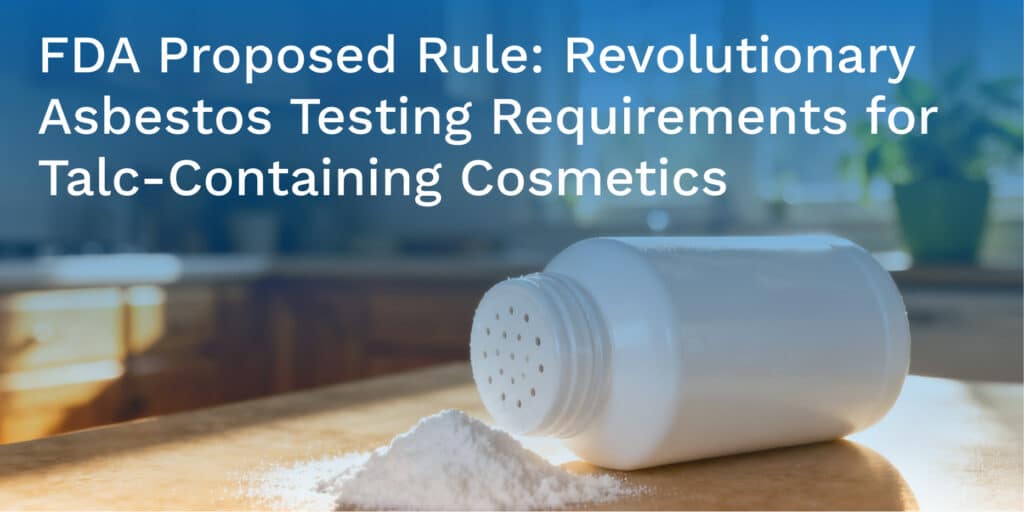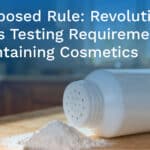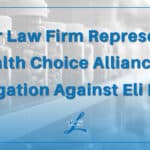
The Crisis of Inadequate Testing: A Decades-Long Failure
For over 50 years, the cosmetics industry has knowingly relied on dangerously inadequate testing methods that have systematically failed to protect consumers from asbestos exposure. The FDA’s proposed rule represents a seismic shift in regulatory oversight, finally acknowledging what scientists have known for decades: current testing methods are woefully insufficient to detect deadly asbestos fibers in cosmetic talc.
The Shocking Inadequacy of Current Methods
The Industry’s Dirty Secret: The cosmetic industry’s voluntary testing standards – specifically the CTFA Method J4-1 and USP Talc monograph – contain fatal flaws that have left millions of consumers unknowingly exposed:
- The J4-1 Method’s Catastrophic Blind Spot: This industry standard completely ignores chrysotile asbestos (the most common form) and only tests for amphibole minerals if initial X-ray diffraction screening detects them at levels above 0.5% by weight
- The 0.5% Detection Scandal: This threshold means products containing billions of asbestos fibers per gram could pass as “asbestos-free”
- X-Ray Diffraction’s Fatal Flaw: XRD and infrared spectroscopy screening methods miss asbestos contamination below 0.5-1% – levels that still represent massive fiber counts capable of causing mesothelioma, lung cancer, and ovarian cancer
The FDA's Overdue but Groundbreaking Response
Dual-Method Testing Revolution: The proposed rule mandates both microscopy methods because neither alone can adequately protect consumers:
PLM (Polarized Light Microscopy):
- Can identify larger asbestos structures
- Can be limited by inability to detect fibers smaller than ~0.25 micrometers
TEM/EDS/SAED (Transmission Electron Microscopy with analytical techniques):
- Can detect individual asbestos fibers as small as 0.04 micrometers
- Provides elemental composition and crystal structure confirmation
- Can identify a single asbestos fiber in 0.1 micrograms of product
The Zero-Tolerance Revolution
No Safe Level = No Excuses:
- Detection of even ONE asbestos fiber triggers positive result
- This translates to approximately 10^7 fibers per gram sensitivity
- Represents a 100,000-fold improvement over current industry standards
Exposing Industry Practices
The FDA’s analysis revealed disturbing truths:
- In 2019, FDA testing found asbestos in 9 of 52 tested products
- Over 200 FDA-tested samples since 2019 used TEM methods
- Multiple product recalls resulted from FDA’s testing
Critical Compliance Requirements
Manufacturer Obligations:
- Testing Frequency: EVERY batch or lot – no exceptions
- Record Retention: 3 years of comprehensive data including:
- Raw microscopy images
- Spectral data
- Diffraction patterns
- Complete methodology documentation
- Rapid Response: Records available to FDA within 24 hours
Supplier Certificate Loophole – With Teeth:
- Manufacturers CAN rely on supplier testing BUT must independently verify accuracy initially and annually
- Certificates must specify exact testing methods (both PLM and TEM required)
- No more “trust but don’t verify” relationships
Legal Consequences with Real Bite
Products are deemed adulterated (illegal to sell) if:
- ANY asbestos detected – period
- Testing protocols not followed
- Records not maintained or produced
Criminal liability potential: Under Section 301(a) of the FD&C Act, introducing adulterated cosmetics into commerce is a prohibited act
The Asbestos Definition That Industry Feared
The FDA’s expanded definition includes:
- All six commercial asbestos types
- Plus winchite and richterite (found in certain talc deposits)
- Plus “other asbestiform amphibole minerals”
Why This Matters: The Human Cost
- No safe exposure level exists for asbestos
- Diseases typically manifest 10-40+ years after exposure
- Daily cosmetic use creates cumulative lifetime exposure
- Inhalation, ingestion, AND perineal exposure pathways all pose risks
- Links established to mesothelioma, lung cancer, laryngeal cancer, ovarian cancer
Industry Resistance and FDA's Response
Despite industry claims about cost and complexity, FDA’s economic analysis shows:
- Annual testing costs: $1.29-6.78 million industry-wide
- Compare to: Billions in liability from asbestos-contaminated talc products
- FDA’s position: Consumer safety is non-negotiable
The proposed rule would be implemented 30 days after final rule publication, which means there would be no lengthy phase-in period allowing continued exposure.
“This rule represents the most significant advancement in cosmetic safety regulation in decades, providing at least some protection consumers have deserved all along. The only true protection would be to ban talc in cosmetics, pharmaceutical, food and other consumer products.” – Darron Berquist
Darron Berquist is the managing attorney for asbestos litigation at The Lanier Law Firm, working from our New York City office.







